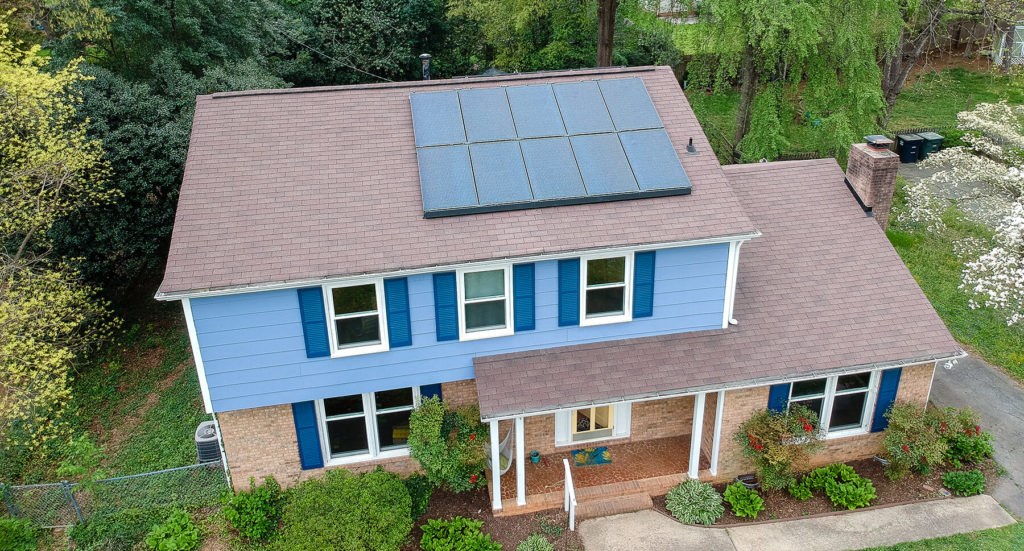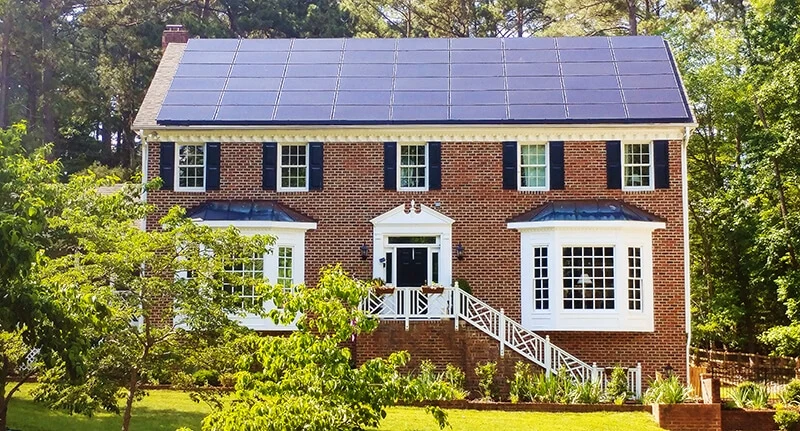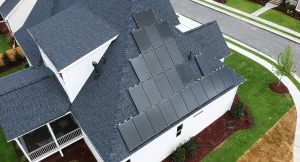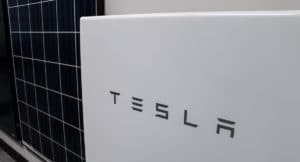How to Size a Solar System
By the end of this module, you’ll know how each of these factors impacts your system size and should be able to approximate the solar system size you need!
Once you determine if your home is a good site for solar (p.s. here’s a refresher), your next question is probably, “What size solar system do I need to run my house?” We custom design each of our solar systems around the following factors:
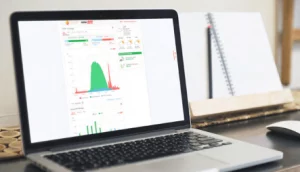
How much solar you need
Your home’s energy consumption requirements tell us the upper limit of how much solar energy you will need to power your home.
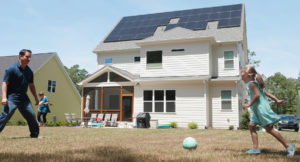
How much solar you should get
Once we know how much solar you need, we whittle that down to how much solar you should get. We build this recommendation off of your savings goal – Do you want to maximize your ROI or do you want to reach net-zero energy use?
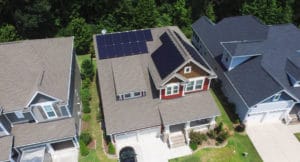
How much solar you can get
There’s not much we can do about overcoming set constraints and we’ll never push you beyond what you are comfortable with, but there are a few ways we can work around specific limitations when it comes to your roof size/available space.

Sizing for your budget
When it comes to the specifics of your system design, budget questions like "How much do you want to spend on solar?", "Do you want our premium solar panel option or our most cost-effective option?" will guide how we customize a solar solution that stays within your limits.
Lesson 01
Energy Usage ↴
How much solar do you need?
Whether it’s for new construction or an existing home, there are several factors that determine how much solar power can be produced at your home. Regardless, as a general rule of thumb, we always start with energy usage when sizing a solar system.
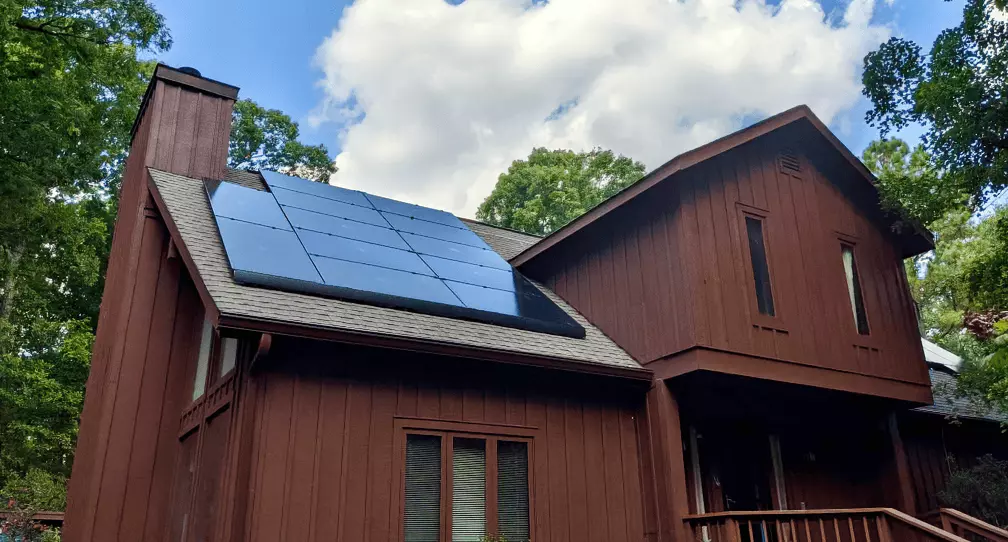
Designing a System for Existing Homes
For existing homes, we prefer to look at your previous 12 months of electric bills so we can establish a good sense of your energy usage patterns over the course of a year. If we cannot get a full 12-month view of your bills, we can estimate your monthly usage based on your peak winter and peak summer usage while factoring in whether you use natural gas or electricity for heating.
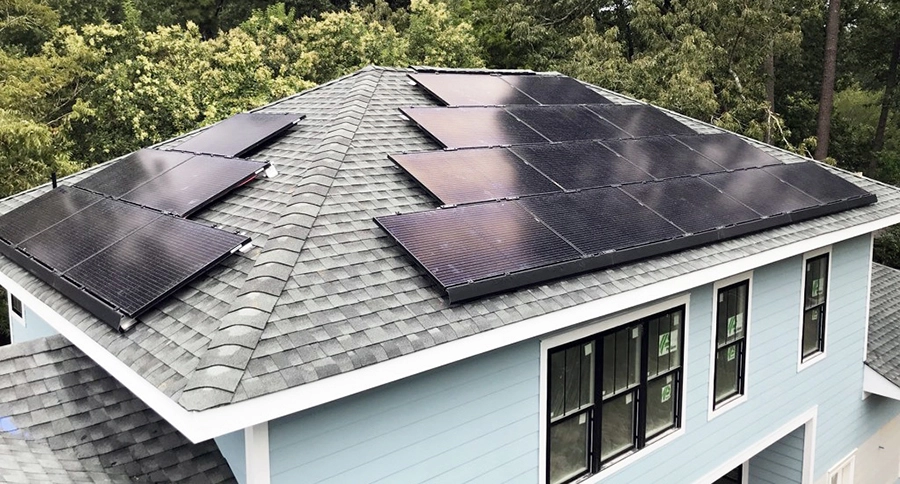
Designing a System for New Construction Homes
For new construction homes, our building science team can create an energy model for your home that predicts your future energy usage (if you are building your home with one of our 200+ NC Builder partners, then we’ve probably already generated this model).
Once we have a sense of your electric consumption needs, we’ll talk with you about any events on the horizon that might impact your usage. Are you thinking about getting an electric vehicle? Are your kids moving out soon? Are you going to get a pool with your end-of-year bonus? Are you contemplating mining Bitcoin or starting a hydroponic farm? We’ll take all of these changes into account to appropriately size your system, up or down.
New Home Solar Checklist
Ballparking Solar System Size Based On Your Annual Energy Usage
Based on your annual electric and monthly consumption pattern, we can ballpark a general system size for you. To do this, we use a rule-of-thumb number for solar production in NC to estimate your needed system size.
Based on our experience, our rule of thumb is that 1 kilowatt (kW) of solar installed in NC will produce 1,300-kilowatt hours (kWh) per year. So if your home uses 12,000 kWh per year, we’d estimate you need around a 9.2 kW solar system to meet 100% of your energy needs (12,000/1,300 = 9.2).
This graph shows how this rough estimation translates to solar kW and the number of solar panels.
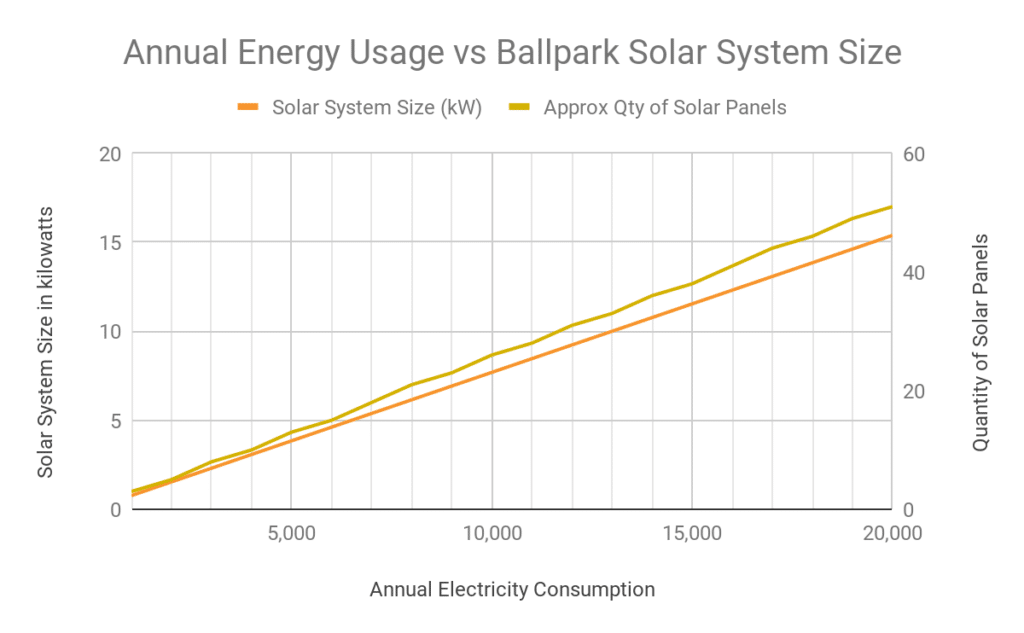
Remember, this is just an initial rough estimate. We always refine your system size with more accurate annual production estimates based on the exact solar potential of your site after we perform a full site evaluation of your home, discuss your goals of going solar, and work through any limitations.
Lesson 02
Savings Goals ↴
How much solar should you get?
This graph shows the balance we are trying to reach between monthly usage for an average North Carolina home using electric heating (a home with natural gas heating would not have a winter spike in usage) and monthly solar production.
Overlayed on top of the home’s energy usage is the production from two solar systems — one that offsets 100% of the home’s annual usage and one that minimizes the amount of energy that will be forfeited to Duke (any excess solar production from your solar system accumulates until the end of May when it is forfeited to Duke).
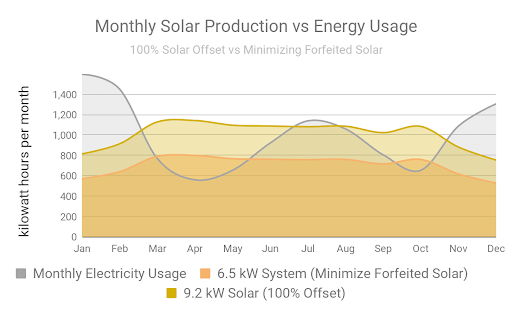
Based on our more detailed comparison of monthly usage vs solar production we might refine our recommended system size for this home from 9.2 kW to 6.5 kW if maximizing your ROI is your main goal. I say might, because our solar designers will weigh your cost of forfeiting some production to your utility vs the cost efficiencies of having a larger system which produces more total savings.
Fun fact
Solar in North Carolina
North Carolina ranks 4th in the U.S. for solar adoption as of Q1 of 2022, according to a report from the Solar Energy Industries Association (SEIA). In simple terms, there are enough installed solar panels to power practically one million homes. In terms of solar production, North Carolina ranks 5th, according to a SEIA ‘2021 Year in Review’ report.
A benefit of living in NC is that we receive more sunny days per year than the national average so that’s some awesome news for us solar-lovers! The average solar panel system size for areas in North Carolina (like Charlotte, Raleigh, Wilmington, Cary, and Apex) is 6.5kW to 8.5kW.
Lesson 03
Limiting Factors ↴
How much solar can you get?
The two primary factors that limit what size solar system you can add to your home is the physical space to install the solar panels (either on your roof or ground mounted in your yard) and your budget for making the switch to power up with the sun.
Available Area for Solar
Without enough eligible space to install solar panels, your solar savings will remain theoretical. We define eligible space as an area that:
- Doesn’t have significant shading
- Is free from roof obstructions like vents and dormers
- Is not facing northward
Common Questions
How much roof space is needed for a solar system?
If a space meets all the criteria above, then it is ready to shine. For a roof-mounted solar system, each panel takes up an area of approximately 18 square feet. So for the 100% energy offset 9.2 kW solar system we have been using as an example, we would need 31 panels (if we assume 350 watts per panel) or 470 sq feet of eligible roof space (100 sq ft less than what as needed 2 years ago!).
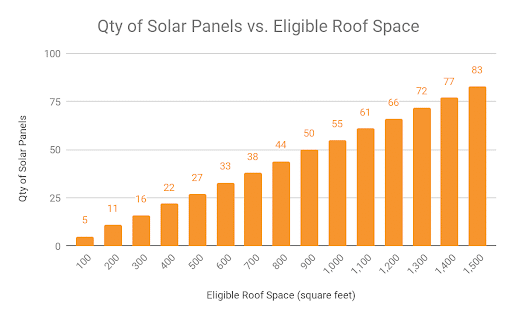
What kind of space is needed for a ground-mounted system?
For a ground-mounted solar system, an eligible space is one that is free from significant shading and close enough to your home or electric meter that trenching is feasible and cost-effective (i.e., within approx 500 ft).
Ground-mounted panels can take up more area than roof-mounted panels if there are multiple rows because we have to account for shading created between rows of panels (this is creatively called inter-row shading). For a south-facing system, tilted to 30 degrees (to optimize production), the effective area taken up by the panels (accounting for inter-row shading) would be close to 60 square feet for the same 18-square-foot panel!

Lesson 04
Sizing for Your Budget
Your budget is an obvious and important criterion for your system size. We’ll work with you to find a system that balances what you can spend with your optimal system size.
Calculating Solar System Size
The good news is that there is some flexibility in price and how we design your system to maximize your budget and your home’s solar production.
For example, if you are limited by space you might need more efficient, higher-wattage panels that take up less room. However, while you will need fewer panels to reach the same system size (and production output), these panels are more expensive. On the flip side, you might have more than enough space allowing you to opt for a higher quantity of lower wattage and lower cost panels to reach the same production numbers.
So while there is flexibility between these options, by far, the biggest driver of your system’s price is the overall system size.
Average Solar System Size and Cost in North Carolina
For simplicity, let’s look at some averages for solar system cost and size. In 2021, our average residential solar system size is 8.5kW which has an average price of $27,000 before incentives and $17,000 – $20,000 after incentives. The graph below will give you a reference for how that average price scales up and down as system size changes.
As a reminder, this is just an average. By now, we hope it’s abundantly clear that there are many factors that go into determining exactly how much your solar system will cost. (So, please, don’t hold us to this average when you see your custom design. Karen, we’re looking at you! 👀)
For a full breakdown of solar costs and the variables that can impact the bottom line of your system, check out our guide to home solar costs.
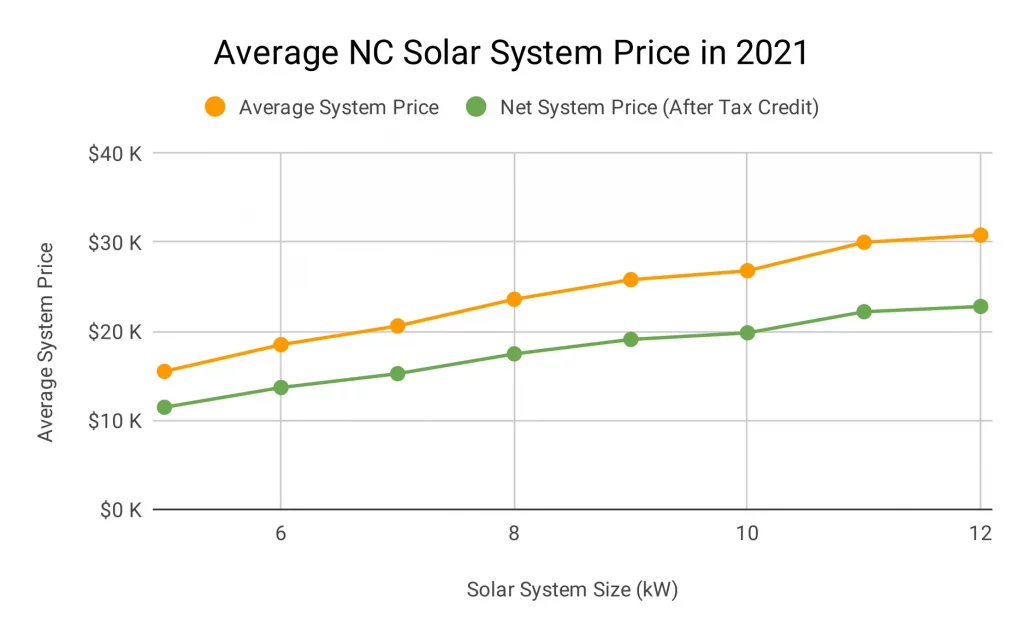
Note: this illustration represents solar system pricing without battery storage.
Fine Tuning Your System
So if your energy needs call for an 8.5kW system, but your budget is closer to $15k, we can work with you to scale your system down to closer to 7kW — and we’re more than happy to show you all of the different options we can use to land at your budget.
Don’t forget! Incentives like the 30% Federal Investment Tax Credit (ITC) for solar can also help you reach your budget. We’ll go over this more in the next module.
What's Next?
Module 05: Solar Cost & Incentives
After reading this, you should have a good sense of what factors determine the perfect system size for your home.
- What size you need is determined by your energy usage
- What size you should get is refined by your savings goal — Maximum solar offset vs maximum ROI
- What size you can get is defined by the eligible space you have available for a system — and of course, your project budget
Next up in your solar education journey is a deeper dive into Solar Cost & Incentives! If you have questions about any of these items or you want help determining the perfect solar system size for your home, schedule a call with one of our solar educators, and let them know how we can help you on your solar journey. If you already have a solar proposal in hand, or you are outside of North Carolina, check out our top 11 items to watch out for on a solar proposal.
Learn More Solar 101
Ready to Get Started?
Schedule a free assessment to learn more about solar power & battery storage for your home.
About Us
North Carolina’s solar power and building performance expert. Founded in 2001, we’ve worked for 20+ years to improve the way people make and use energy.

